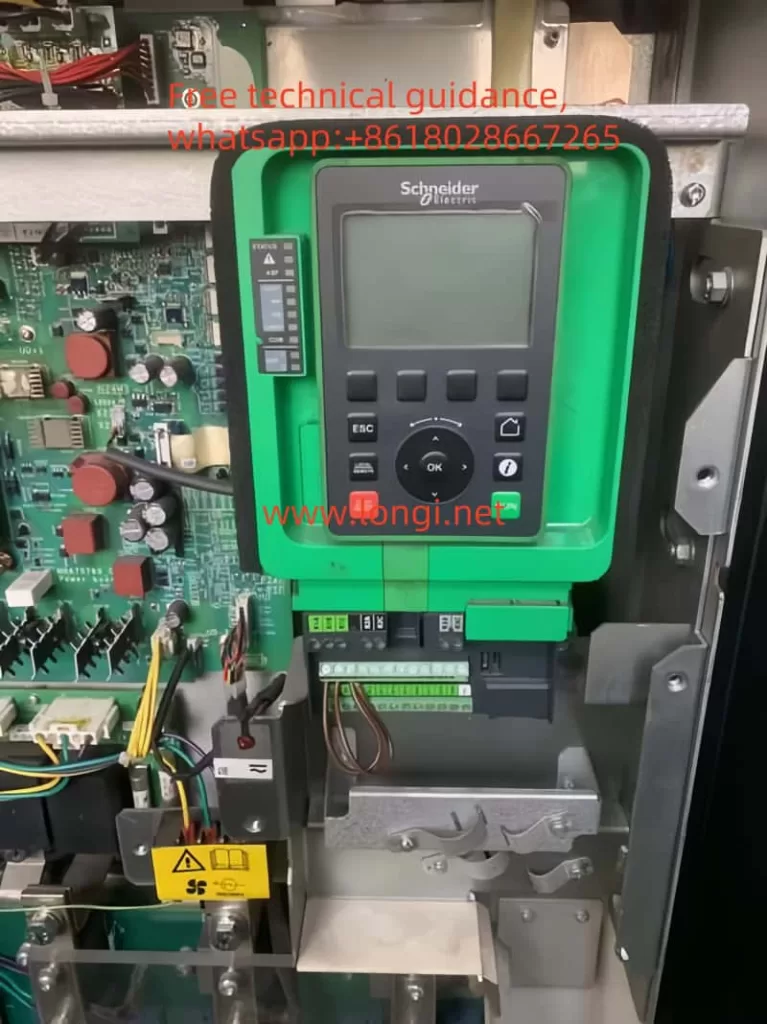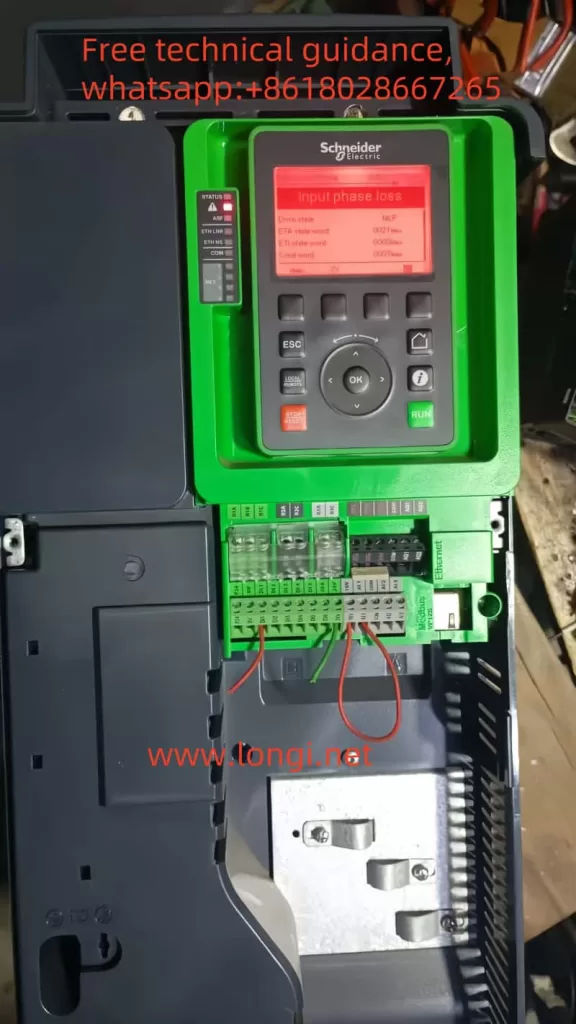The Schneider VFD ATV630(altivar 630) is a crucial device in the field of industrial automation, and its stable operation is vital for the efficiency of production lines. However, in practical applications, the ATV630 VFD may sometimes encounter Input Phase Loss and No Line Power (NLP) faults. This article will provide a detailed analysis of the causes of these two faults and corresponding troubleshooting methods.

I. Input Phase Loss Fault
- Fault Phenomenon
The Input Phase Loss fault typically manifests as the VFD detecting a lack of one or more phases in the input power supply, leading to the inability of the VFD to operate normally.
- Causes
Power supply issues: Incorrect power supply connected to the VFD, such as connecting a single-phase power supply to a three-phase VFD.
Blown fuse: The fuse on the input side of the VFD may trip due to overcurrent or short circuit.
Unbalanced load: Unbalanced three-phase load may also result in phase loss faults.
Hardware failure: The internal detection circuit of the VFD may malfunction.
3. Troubleshooting Methods
Check power connection: Ensure that the VFD is connected to the correct three-phase power supply with stable voltage.
Inspect fuse: Check the condition of the fuse on the input side and replace it if necessary.
Balance load: Adjust the load to ensure balanced three-phase loading.
Contact after-sales service: If internal VFD failure is suspected, contact the supplier for after-sales repair.

II. NLP Fault
- Fault Phenomenon
The NLP fault indicates that the VFD has no main power supply voltage, i.e., the VFD does not detect main power input.
- Causes
Main power not connected: Only the 24V power supply is provided to the control terminals of the VFD, but the main circuit power supply is not connected.
Low voltage: The main circuit voltage is lower than the rated voltage of the VFD.
Hardware failure: The rectifier section of the VFD or components for detecting voltage may malfunction.
DC reactor not connected: For some high-power VFDs, if the DC reactor is not correctly connected, it may also lead to NLP faults.
3. Troubleshooting Methods
Check main power: Use a multimeter to check if the input voltage of the main circuit is normal.
Measure DC voltage: Use the DC range of the multimeter to measure the voltage between the PA/+ and PC/- terminals to ensure that the DC bus voltage is normal. If it is low, there may be a fault in the rectifier section of the VFD.
Check monitoring menu: View the main power supply voltage in the monitoring menu. If it is abnormal, it may be due to a failure of the internal voltage detection components of the VFD.
Inspect DC reactor: For VFDs equipped with a DC reactor, ensure that it is correctly connected.
III. Preventive Measures
To avoid similar issues, it is recommended to regularly maintain and inspect the VFD to ensure it is in good working condition. Specific measures include:
Regularly check power connections: Ensure that power connections are secure without looseness or corrosion.
Monitor voltage changes: Regularly monitor changes in power supply voltage to ensure it remains stable within the range allowed by the VFD.
Balance load: Arrange the load reasonably to avoid problems caused by unbalanced three-phase loading.
Professional repair: For complex faults, contact a professional VFD repair service provider for handling.
In summary, when the Schneider VFD ATV630(altivar 630) encounters Input Phase Loss and NLP faults, the causes should be analyzed first, followed by troubleshooting and repair according to the corresponding methods. Meanwhile, regular maintenance and inspections can effectively prevent the occurrence of similar faults, ensuring the stable operation of the VFD.
